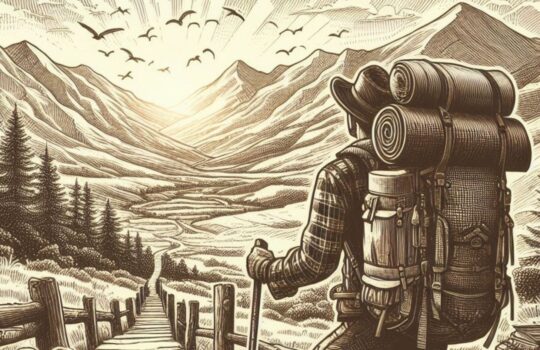It’s always a bit depressing when you have nailed a healthy base weight on your pack, complete with
your trimmed toothbrush, and ultralight sleeping bag, only to put another 2kg in your bag of water.
Yet, water is essential for survival, and we need to drink regularly to avoid sunstroke, dehydration, and a range of other unpleasantries.
I’m not going to suggest the formula to how much water to carry, as this would vary depending on where you are walking. Influencing factors could include, age, weather, sweat rate, body type, and how strenuous the trail is
However, as a guide, a half-liter of water per hour is a good starting point.
In this article, I will lay out how to prepare for water, how to carry water, and how to find water
on the trail.
Water prep
First, lets talk about bottles.
Take yourself down to any outdoor shop and you will find a wide range of bottles, from Nalogen flasks to soft flasks and bladders.
All are fine to use, and your bottle of choice will really depend on how you wish to travel.
The choices of the bottle, with pros and cons, generally tend to be:
Hard bottles, such as Nalogen (plastic) and stigg (metal)
Pros: They are tough as nails. You can scratch, puncture and drop these bottles and they are unlikely to bleed the wet stuff.
Cons: They are heavy…
Bladders, such as playtapus, and camelback
Pros: They fit neatly in your bag, close to your back and can be accessed easily with a straw.
Cons: When they leak, they can ruin your day
Softflask such as …..
Pros: They weigh very little
Cons: They won’t last as long as other bottles
The other option is a smart water bottle. You know the ones. Pair this with a sawyer water filter, which screws on top, and you have yourself an ultralight refillable bottle.
Testing your gear
Having a pre-hike shakedown, especially if you are not yet sure on the best setup for your needs is strongly advised.
Planning refills
If you are not planning to carry a filter, which will vastly improve your ability to collect water from a range of sources (stream, resivour etc), then I strongly suggest having a water plan.
by this I mean, at least spend 20 minutes checking possible refil stops on route. This can include towns, where it will be obvious where you can fill up, shops and supermarkets, water fountains, and campsites. Bascially, having a list, or markers on a map of possible refil oppoortunities allows you to keep your water topped up. For well populated long distance trails (Thames Path for example) this is less of an issue, but for routes like the Pennine Way, or West Highland Way I strongly suggest a bit of planning ahead.
Carrying Water
When carrying water you need to make sure its actually accessable.
Bladders by their nature are designed to be accessable with a straw being available by your mouth at all times – perfect for frequent sipping.
Softflasks are also great if paired with a bag which allows you to holster bottles at the front since they can be accessed without any difficulty
Bigger bottles like a nalogen or sigg tend to get stashed at the back of your bag where the water bottle pockets are big enough to take them.



